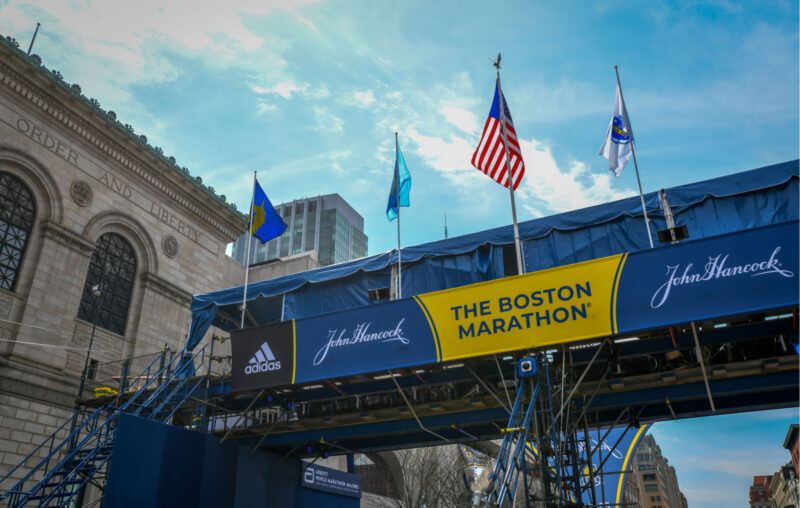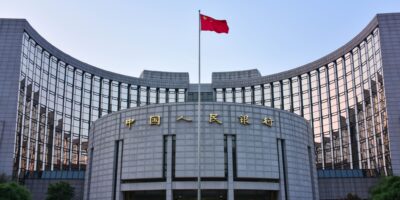The 2013 Lockdown Experiment in Boston

In May of 2020 AIER Editorial Director Jeffrey Tucker published an article entitled “The 2006 Origins of the Lockdown Idea.” In it, he chronicled the the way in which
a temporary plan to preserve hospital capacity turn[ed] into two-to-three months of near-universal house arrest … causing worker furloughs … a stoppage of international travel … a 40% job loss among people earning less than $40K per year, devastation of every economic sector, mass confusion and demoralization [and] a complete ignoring of all fundamental rights and liberties, not to mention the mass confiscation of private property with forced closures of millions of businesses[.]
As it turned out, there was a fascinating tale at the root of the disastrous disease mitigation policies put in place to thwart the spread of the novel coronavirus. Elements included: a burger joint meeting, a high school research project, and ultimately a brilliant, storied epidemiologist issuing warnings about the risks of upending social functioning during a pandemic.
But between 2006 and 2020 there were interim steps, and an overlooked one took place seven years later.
The Bombing
April, 2013. On Monday the 15th, near the finish line of the 117th running of the Boston Marathon, two bombs built from pressure cookers detonated 14 seconds apart. Three were killed and 264 wounded – many of the latter with horrifying limb injuries requiring amputation. Gut-wrenching scenes filled the media as condolences flooded in from the rest of the United States and the entire world.
Images of the alleged perpetrators were released three days later, drawn from surveillance cameras and witness accounts. Several hours later, between April 18th and early April 19th, 2013, a maelstrom of violence erupted as the terrorists sought to escape. More lives were lost, violent carjackings took place, and the culmination – including pipe bombs thrown like grenades – came in a firefight with police in the Boston suburb of Watertown, MA.
Manhunt
After a particularly grisly episode wherein one of the culprits drove over the other in an effort to flee, the wounded survivor abandoned the vehicle and disappeared on foot into the Watertown suburbs.
A massive manhunt ensued. At approximately 1:57am, residents of Watertown were advised to stay inside and lock their doors until further notice. By 5:45am the lockdown was extended to surrounding towns and neighborhoods, including Waltham, Cambridge, Brookline, Newton, and Allston-Brighton.The announcement was made via television, loudspeaker, and text notice; the actual wording of one sent to residents of Somerville, MA, read as follows:
Due to an ongoing manhunt in the Boston area, state authorities have shut down the [Massachusetts Bay Transportation Authority] and issued a shelter-in-place advisory for a number of surrounding towns. At the time, Somerville has NOT been included in the advisory, but we ask that Somerville residents observe the shelter-in-place advisory if they can. If possible, please stay home, keep doors locked, and do not open the door for anyone other than identified law enforcement officials. Please also limit travel as much as possible. State authorities do not perceive a threat to our community, and residents are not required to remain in their homes, but please use common sense and stay tuned to area news sources for updates. Please also be aware that residents in the cities of Boston, Watertown, Waltham, Newton, Belmont, Cambridge, Brookline, and Allston-Brighton have been advised to shelter-in-place. Businesses in these areas have also been advised to remain closed. Again, authorities consider the City of Somerville to be safe and NOT under any immediate threat.
The entire city of Boston was put under lockdown at 8am on Friday, April 19th, 2013 by Massachusetts Governor Deval Patrick: public transportation within the metro area was suspended, private taxis were immobilized, and Amtrak service entering and leaving the city was cancelled. Schools and universities closed, as did private businesses and other facilities.
Although fear of the violent malefactor was widespread, the forced cessation of social and economic life shocked many as well. Reuters, less than three hours after the government shutdown of Boston began, reported that
another cost was added to the human and emotional toll [of the marathon bombing]: lost business … From the postponed baseball game at the Red Sox’ beloved Fenway Park to canceled classes at Harvard University to empty cubicles at leading fund management firms, the New England city is likely to suffer hundreds of millions of dollars [in] economic losses … A slew of concerts and the Bruins hockey game were postponed, while restaurants and shops were shuttered. Still, at least a few businesses were open, including Yummy House Chinese Restaurant on Beacon Street in Brookline. In Cambridge, near the apartment of the Tsarnaev brothers, Troy & Anthony’s Barbershop was packed – in defiance of a police request for all businesses to close.
A Northeastern University professor was quoted as saying, “My fear is that we don’t find him today. We can’t go on living in lockdown indefinitely. How can you find one person in a whole city?” Echoing that sentiment, a Bloomberg staff writer tweeted, “If Tsarnaev’s location isn’t confirmed by sundown, does the lockdown continue through Friday night? Over the weekend? It’s unclear.”
Photographers, as stunned as everyone else, documented the unprecedented lifelessness of various Boston neighborhoods that Friday.
A Mere Seven Years Ago
Dzhokhar Tsarnaev was captured late that Friday afternoon, hiding in a boat in a Watertown backyard. But the lockdowns had ended several hours before his capture.
Why did Boston and Massachusetts public officials end the shelter-in-place before the second suspect, who was presumably armed with automatic weapons and incendiary devices, was found? The 130-page “After Action Report for the Response to the 2013 Boston Marathon Bombings” compiled by the Massachusetts Emergency Management Agency, the Massachusetts Department of Public Health, the City of Boston, and both the Massachusetts National Guard and State Police, explains the basis for the decision to lift the restrictions succinctly:
As the house-to-house search began to near its conclusion, law enforcement officials became increasingly concerned that the suspect had escaped the area. If the suspect were no longer in the area, the shelter-in-place request would put unnecessary burdens on residents and businesses in the affected communities. Given these circumstances, the UC decided to lift the shelter-in-place request and resume MBTA transit service. The Governor announced these decisions at a 6:03 p.m. press conference, thanked the public for their cooperation, and cautioned them to remain vigilant, asking individuals to report any suspicious activity to law enforcement. (emphasis added)
Yes: in April of 2013, a single day of mandated closures aroused deep concern among political officials as to the health and viability of citizens and businesses. Several hours in, articles with titles like “How much will the Boston lockdown cost?” were already appearing.
In the months following that day editorials weighed in: not only on the militaristic response to an at-large terrorist, but the impact of government-imposed lockdowns. Radley Balko warned that
[i]f we don’t force a discussion about the tactics used in the aftermath of the Boston bombing, we risk allowing those tactics to become the norm … In shutting down Boston … we let the bombers inflict hundreds of millions of dollars more in damage than they possibly could have inflicted on their own[.]
As editorial writer Conor Friedersdorf wrote in The Atlantic slightly over two years later, regarding comments made by then-Boston Police Commissioner Ed Davis pertaining to the choice and consequences of the April 19, 2013 Boston lockdown:
Yes, if you shut down a bus line, people at various stops on the line will be stranded. And if you shut down a train line, same deal. But by what logic do those premises lead to the conclusion that one must shut down all the bus lines or no bus lines? … “That’s the choice you have to make – you’re either in this or you’re not,” is just false. Lots of intermediate choices were available … In hindsight, it is abundantly clear that there were superior options … In fact, the suspect was apprehended after the governor lifted the voluntary “shelter-in-place” order, knowing he could only keep the metropolitan area on lockdown for so long and concluding that the suspect wouldn’t be caught soon enough … Try as we might, the aggregate costs imposed on a city of millions by even a single day of disrupted work, play, and living are hard to calculate and impossible to fully fathom.
By one estimate, that single day of lockdown cost the Boston metropolitan economy $333 million. By another, it may have been as much as $1 billion.
Unsurprisingly there were also milquetoast responses from the media and power elite. Time magazine, ignoring the tremendous gravitas that government suasion has in the minds of most citizens, took pains to describe the shelter-in-place as a “request,” praising the Boston lockdown as one of a variety of “creative methods of keeping law and order.” The U.S. Chamber of Commerce, allegedly an advocate for the risk-bearing commercial class, sheepishly concluded that “[a] ‘closed’ sign is never a good sign for business, but there are times when it’s the right call for everyone.”
And Here We Are
The director of the Homeland Security Policy Institute at George Washington University at that time declared that: “[i]n terms of both scale and scope, the shelter-in-place that was enforced was extraordinary, perhaps even unprecedented, but so too were the circumstances.”
But were they? When, over the course of seven months in 2002, a rogue sniper team killed ten and wounded three in Washington, DC, Northern Virginia, and Maryland, there were no lockdowns. Neither were there during any of a tragically long list of terrifying rampage killings throughout history. And between 1970 and 1975 (in particular, during 1971 in New York City, Chicago, and San Francisco), scores of bombings by the Weathermen evoked no such response. They didn’t during crime sprees decades previously, either.
And in the face of pandemics? As has been plentifully documented: never prior to the SARS-CoV-2 outbreak in 2020.
The ratchet effect – an adage pointing out that powers arrogated by states during crises never recede, but rather become part of an ever-expanding policy armamentarium – was mentioned in the aftermath of the Boston bombing lockdowns within the context of terrorism. But it should be noted that newly-assumed powers, over time, may additionally cross pollinate: cameras installed for security purposes can also be used to record license plates to impose parking fines. Eminent domain, despite explicit restrictions at the Federal and state levels, has gone from a tool for acquiring property for public use to an instrument through which politically powerful local interests partner with private development firms.
The post-Boston Marathon bombing lockdowns were, explicitly or implicitly, part of the calculus of the coronavirus lockdown decision. Policy choices are a result of many inputs. Historical precedent, predominant theories, and anticipated public responses factor into political decisions. What remains now is to return to a time – a mindset, an attitude, a courage – where concerns regarding the indefinite suppression of human life rate a close, if not equal, ranking to overall risk in crisis response prescriptions.










